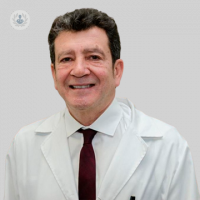Botulinum toxin and hyaluronic acid in Maxillofacial Surgery
Written by:Botulinum toxin is obtained from a bacillus called "Clostridium Botulinum". The specialists use botulinum toxin to produce the relaxation of the muscles, eliminating facial wrinkles.
Botulinum toxin has several applications in aesthetics approved by the Ministry of Health for the frontal region, in the glabellar area, the area between the eyebrows. To remove the wrinkles of expression that occur over the years.
It also has a clinical use to treat various problems. It began to be used in ophthalmology for the treatment of strabismus and is already used in multiple specialties such as urology for cases of bladder hypertonia, in general medicine and the digestive system to treat sphincter problems and is widely used in neurology to treat all, muscle dystonia problems.
In maxillofacial surgery it is mainly used for hyperfunctions or dystonias of the chewing muscles and facial muscles, in problems that can occur in facial paralysis. And it is used for the problems of hypersudation in the area where the parotid gland is located, and which occurs mainly after performing surgery to remove parotid glands, which are called parotidectomies, which is a very frequent surgery in maxillofacial surgery to treat mainly benign and malignant tumors of the parotid region.

Face fillers: hyaluronic acid
Fillers are used to increase the volume of an area and, thus, rejuvenate it. There are several types of fillers, there are some biodegradable and others that are permanent. Permanent fillings have, in many cases, caused problems of rejection, infection and granulomas.. So personally, we do not recommend its use.
Among the biodegradable there are several types, the most widespread is hyaluronic acid. It is a material obtained from bacterial synthesis. And, therefore, it is very safe, gives few adverse reactions - few allergic problems, which are exceptional - and is biodegradable. It lasts, depending on the type, between 6 to 9 months.
Hyaluronic acid is mainly used in the nasolabial area to produce a rejuvenation of this area, which is a key area in the facial aesthetics of the lower third of the face, and solves the problem of flat lips with wrinkles known as bar code. Or the nasolabial grooves that with age, by the process of maxillary reabsorption, are very marked and, they produce an aged effect on this area.
In facial aesthetics it is also used to increase and reaffirm the area of the cheekbones or chin. And they are an ideal complement for the treatments of dental implants, to reaffirm and rejuvenate the tissues of the nasolabial area. Along with these applications that are aesthetic, it has some indications for reconstructive surgery of the face. When we find collapses, defects or lack of tissue, which can occur after treatment of cancer surgery tumors, after trauma and also of syndromes or diseases that produce soft tissue atrophies.
The boom of botulinum toxin and hyaluronic acid
These procedures of botulinic toxin and fillings with hyaluronic acid are the most common procedures in cosmetic surgery. In the US, about 2 million botulinum toxin procedures and one and a half million facial fillers are placed every year. This supposes a comparative volume very big in relation to the rest of procedures of plastic or aesthetic surgery - perhaps in the set they can arrive at 1.2 million, including the operation of breasts, liposucciones, rhinoplasty, lifting ... -.
They are very common procedures because they do not need, most of the time and except in reconstructive surgeries, the use of operating theaters. They can be done in the clinic by the specialists with the necessary training, because they do not require sedation or general anesthesia and have an application duration of 15 to 30 minutes.. In fact, the Anglo-Saxons call it "lunch time" -what is done at the time of the meal- because it is done in a short space of time and without sequelae of an inflammatory type.


